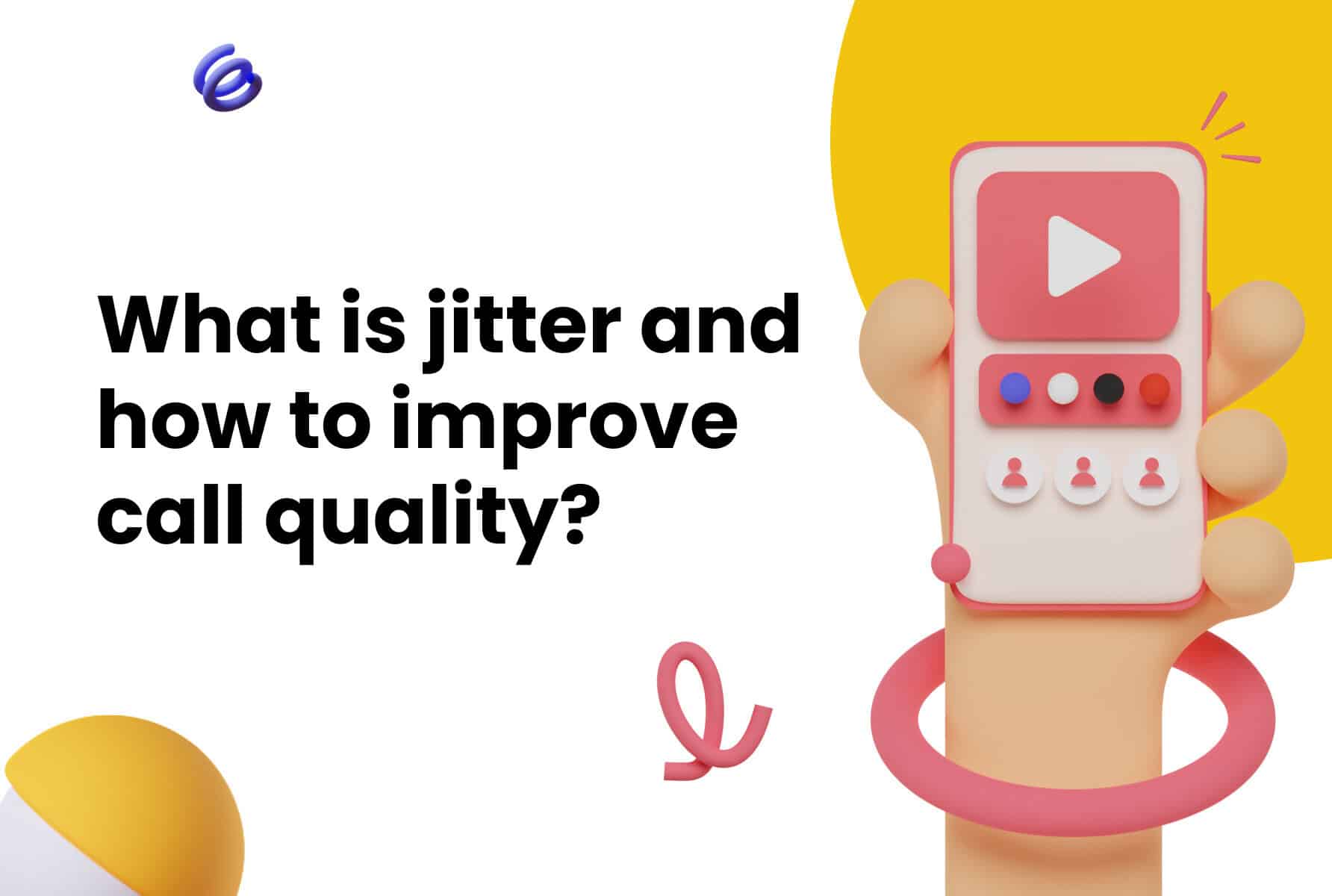Every conversation tells a story. In the world of call centers, these stories are packed with important insights—from understanding customer frustrations to uncovering hidden opportunities for growth. What if there was a way to listen beyond words? To interpret emotions, anticipate needs, and act on trends before they become problems? Enter speech analytics for call centers.
Gone are the days when a call center was just about answering phones. Today, it’s a strategic powerhouse where customer experience is shaped, and business reputations are forged. Speech analytics takes this one step further by diving into the details of every conversation, empowering businesses to:
- Understand customer emotions in real-time.
- Pinpoint recurring pain points.
- Train agents to handle even the toughest calls.
In this blog post, we’ll explore how speech analytics can transform your call center. From unlocking hidden customer insights to empowering your team with useful data, we’ll show you how this technology can improve your daily operations.
What Is Speech Analytics for Call Centers?

Speech analytics goes beyond just recording conversations. It uses advanced technologies such as natural language processing (NLP), machine learning, and AI-driven algorithms to analyze every layer of communication—not just the words spoken but also the tone, speed, pauses, and emotional cues.
Here’s how it works:
- Recording Conversations: All customer interactions—whether inbound or outbound—are captured and stored as audio files.
- Data Processing: These recordings are converted into text using speech-to-text engines. This transcription forms the basis for further analysis.
- Analysis with Algorithms: The system scans for keywords, phrases, and patterns. It evaluates sentiment, identifies recurring topics, and even detects emotional states.
- Actionable Insights: The analyzed data is presented in dashboards or reports, giving managers a clear view of performance metrics and areas for improvement.
For example, if customers frequently use phrases like “too slow” or “didn’t work,” the system flags these trends as recurring issues. Similarly, a rising pitch in voice might be interpreted as frustration, prompting an immediate intervention.
Why Is Speech Analytics Essential?
The call center industry is constantly changing, and so are customer expectations. People don’t just want their issues resolved; they want empathy, understanding, and a personalized touch. Speech analytics helps businesses to deliver on these expectations in several ways:
- Enhanced Customer Understanding: By analyzing sentiment and behavior, companies can understand what drives satisfaction and dissatisfaction.
- Proactive Problem-Solving: Trends and patterns highlighted by speech analytics enable businesses to address issues before they escalate.
- Optimized Training: Insights gained from calls help managers coach agents more effectively, improving both individual and team performance.
Key Benefits of Implementing Speech Analytics in Call Centers

Speech analytics turn everyday conversations into valuable insights that help call centers improve interactions, streamline processes, and build stronger customer relationships. Here are its main benefits:
Enhanced Customer Satisfaction
When customers call, they want their issues resolved quickly and empathetically. Speech analytics makes this possible by analyzing conversations in real-time to gauge customer sentiment and emotion. By detecting frustration, confusion, or even satisfaction through tone and language, agents can adjust their approach instantly to provide the best possible experience.
For example, if a customer’s tone indicates frustration, the system can prompt the agent to switch to a more empathetic and reassuring tone. This real-time adaptability ensures that problems are resolved before they escalate. Furthermore, insights gathered from speech analytics help identify recurring issues, allowing businesses to implement long-term solutions that reduce overall customer frustration.
Another benefit is the ability to personalize interactions. Speech analytics uncovers what matters most to each customer, enabling agents to offer tailored solutions that resonate on a deeper level. This not only resolves issues faster but also fosters trust and loyalty, leaving customers with a positive impression.
Improved Agent Performance
Speech analytics doesn’t just benefit customers; it transforms how call center agents approach their roles. By providing detailed feedback on every interaction, it highlights areas of strength and opportunities for improvement. This approach removes the guesswork from training and development.
Here’s how it works:
- Script Adherence: Agents are evaluated on how well they follow the company’s guidelines and scripts. If deviations are detected, managers can offer targeted coaching.
- Performance Metrics: Speech analytics tracks critical metrics like average response time, sentiment scores, and resolution rates, helping agents understand their performance in specific areas.
- Coaching Opportunities: Managers can use real examples from calls to train agents on handling objections, de-escalating tense situations, and improving communication skills.
For instance, if an agent struggles with managing irate customers, speech analytics can identify the exact moments where the interaction goes off track. This allows managers to provide specific guidance and role-playing exercises to build confidence and expertise.
Reduced Call Handling Time
In a call center, every second counts. Speech analytics streamlines the resolution process by identifying common issues and providing agents with instant access to relevant information. This reduces the need for prolonged conversations and minimizes back-and-forth exchanges.
One of the main benefits is the reduction of Average Handle Time (AHT). By analyzing patterns in customer inquiries, speech analytics can flag frequently asked questions or recurring problems. This allows agents to anticipate needs and offer solutions more quickly.
Additionally, speech analytics can automate certain processes, such as summarizing call content or categorizing inquiries. This frees up agents to focus on more complex issues, further enhancing efficiency.
Shorter call durations benefit everyone. Customers appreciate faster resolutions, agents handle more calls in less time, and businesses save on operational costs—a true win-win-win scenario.
Increased First Call Resolution (FCR)
Customers don’t appreciate having to repeatedly call back about the same issue. Speech analytics dramatically improves First Call Resolution (FCR) by providing agents with the tools and insights they need to effectively address customer concerns during the initial interaction.
Another advantage is the ability to predict potential obstacles. Speech analytics identifies patterns that may lead to unresolved calls, such as unclear instructions or missing information. By proactively addressing these challenges, agents can ensure that customers leave satisfied and informed.
Improving FCR not only enhances the customer experience but also reduces call volume, as fewer repeat inquiries are needed. In the long run, this translates to lower costs for the business and happier customers who feel their time is respected.
How Speech Analytics Improves the Customer Experience

Improving the customer experience involves solving problems reactively while attempting to counter them proactively. This means understanding the frustrations that lie behind them. Speech analytics helps uncover the emotions and preferences behind every conversation, with the resulting insights turned into strategies that build stronger connections and deliver better outcomes.
Understanding Customer Sentiment
Tone, pitch, and even silence can tell a lot about how a customer feels. Speech analytics tools interpret these nuances, offering insights into satisfaction or frustration levels. For example, a calm tone might indicate contentment, while a raised pitch could signal annoyance. With this knowledge, agents can adjust their approach in real-time, turning negative experiences into positive ones.
Personalized Customer Interactions
Every customer is unique, and they want to be treated as such. Speech analytics allows agents to access past interaction data, tailoring responses to individual needs and preferences. This personal touch not only resolves issues but also builds loyalty and trust.
Proactive Issue Resolution
Why wait for a problem to escalate? Speech analytics identifies trends and flags recurring issues, allowing businesses to act before customers even reach out. Proactive support doesn’t just solve problems—it prevents them.
By analyzing call data trends, companies can:
- Adjust policies to address common concerns.
- Inform product development based on customer feedback.
- Offer solutions that demonstrate attentiveness to client needs.
Reducing Customer Churn
Customers rarely leave without giving warning signs. Speech analytics helps identify dissatisfaction early on by analyzing language, tone, and repeated complaints. Addressing these red flags can significantly reduce churn and keep customers happy.
For example, if analytics detect recurring complaints about long hold times, businesses can prioritize reducing these delays, improving overall satisfaction.

How to Integrate Speech Analytics with Call Center Software
Integrating speech analytics with your call center software simplifies complex systems, connecting tools in a way that enhances efficiency and strengthens customer support.
How Call Center Software Supports Speech Analytics
Call center software and speech analytics tools work best when integrated. Together, they allow businesses to centralize data, identify trends, and give agents the insights they need to provide exceptional service.
Real-Time vs Post-Call Analytics
- Real-time analytics: Offers immediate insights during a live call, allowing agents to instantly adjust their approach. For example, if a customer starts to display frustration, the system can prompt the agent to take a more empathetic tone or escalate the matter to a supervisor for quick resolution. This ensures the customer feels heard and valued in the moment.
- Post-call analytics: Provides in-depth analysis after the call, which is useful for training and planning. By reviewing conversations, managers can identify recurring issues, track agent performance, and design more effective scripts or training programs.
Both approaches have their benefits, and the choice depends on your unique business needs.
Common Challenges and Solutions in Implementing Speech Analytics
While the advantages are undeniable, implementing this technology comes with its own set of challenges. Let’s explore some common obstacles and how to overcome them.
Data Privacy Concerns
Handling sensitive customer data is a top priority for any business using speech analytics. Regulations like GDPR in Europe and CCPA in California set strict standards for data privacy and protection. Ensuring compliance involves several key steps:
- Transparent Data Collection: Inform customers about how their data is being collected, analyzed, and stored. Clear communication builds trust and minimizes legal risks.
- Secure Storage Solutions: Use encrypted storage systems to protect audio recordings and analytics results. Regular audits and updates to your security protocols are essential to stay ahead of potential vulnerabilities.
- Consent Management: Implement systems to obtain and manage customer consent. Ensure that customers can easily opt-in or out of data collection practices.
Integration Complexities
Integrating speech analytics tools with existing call center software can be complicated. Common challenges include compatibility issues, data migration, and training teams to use the new system effectively. Here are some best practices to ensure a smooth implementation:
- Evaluate Compatibility: Choose speech analytics tools that seamlessly integrate with your current call center platforms.
- Step-by-Step Deployment: Roll out the solution in phases, starting with a pilot program. This approach allows you to identify and address potential issues before a full-scale implementation.
- Cross-Functional Collaboration: Involve IT, operations, and customer service teams early in the process to align on goals and ensure a cohesive strategy.
- Comprehensive Training: Equip your staff with the necessary training to maximize the tool’s capabilities. Include workshops, manuals, and on-the-job training sessions to make the transition seamless.
Accuracy and Software Training
Speech analytics must be accurate and reliable in order to deliver meaningful results. This requires continuous refinement and adaptation to your business’ needs.
Key strategies include:
- Custom Tuning: Adjust the software’s algorithms to align with industry-specific terminology, accents, and languages commonly used by your customers.
- Regular Updates: Keep the software updated with the latest versions to benefit from new features and improvements in accuracy.
- Quality Data Input: Make sure your audio recordings are clear and high-quality for accurate analysis. Background noise or poor call quality can skew results and reduce accuracy.
How to Measure the ROI of Speech Analytics in Call Centers

Implementing speech analytics is an investment, and like any investment, it needs to deliver measurable returns. Assessing its impact requires a clear understanding of the metrics that define success and the broader benefits that unfold over time.
Key Performance Indicators (KPIs) to Track
To measuring the success of speech analytics, you are required to track important metrics. This should provide a clear picture of its impact. Here are some essential KPIs that every call center should monitor:
- First Call Resolution (FCR): This metric tracks the percentage of customer issues resolved during the first call. Higher FCR rates indicate that agents are well-equipped with the insights needed to solve problems quickly, reducing follow-up calls.
- Average Handle Time (AHT): AHT measures the average duration of customer calls. Speech analytics helps reduce AHT by identifying frequently recurring issues and equipping agents with quicker resolutions. Streamlined conversations lead to cost savings and improved customer satisfaction.
- Customer Satisfaction (CSAT): Feedback collected through post-call surveys or sentiment analysis during calls gauges how satisfied customers are with the service. Speech analytics can provide real-time sentiment analysis, enabling agents to adapt their responses and improve CSAT scores.
- Net Promoter Score (NPS): NPS measures customer loyalty and their likelihood of recommending your service. By addressing the root causes of dissatisfaction, speech analytics can help boost NPS over time, fostering long-term customer relationships.
Long-Term Benefits
Speech analytics isn’t just about quick wins—rather, its implementation is done to create lasting change. Here’s how:
- Customer Loyalty: Speech analytics helps build stronger connections by ensuring consistently positive customer experiences. Happy customers are more likely to trust your business and stick around, becoming loyal advocates over time.
- Reduced Churn: Identifying and addressing dissatisfaction early on helps prevent customers from leaving. Speech analytics pinpoints potential red flags, such as recurring complaints or negative sentiment trends, allowing businesses to act proactively and retain valuable clients.
- Business Growth: As customer satisfaction improves, so does your reputation. Happy customers are more likely to recommend your services to others, driving organic growth.

Future Trends in Speech Analytics and Call Center Technologies
Speech analytics are quickly evolving, bringing in new capabilities that are reshaping how call centers operate. Here’s what’s on the horizon:
AI and Machine Learning in Speech Analytics
As businesses embrace cutting-edge technologies, AI and machine learning are poised to transform how speech analytics work. These advancements are making it possible to go beyond analyzing what customers say to predict what they might need next.
Omnichannel Analytics
Customers interact across multiple channels, from voice to chat to social media. Speech analytics is expanding to include all these touchpoints, ensuring a consistent and smooth customer experience.
How to Choose the Right Speech Analytics Tool for Your Call Center

With so many options available, choosing the right speech analytics tool can feel overwhelming. However, the decision becomes clearer when you focus on the specific needs of your call center. Let’s break down the essential features to look for and how to weigh the costs against the long-term benefits.
Key Features to Look for in Speech Analytics Software
The effectiveness of a speech analytics tool hinges on the features it offers. Here’s a checklist of must-haves that can make a big difference:
- Sentiment Analysis: Allows the tool to assess customer emotions in real-time, helping agents adjust their tone and responses accordingly.
- Integration Capabilities: Ensures the tool seamlessly connects with your existing systems, whether it be CRM platforms or call center software, to streamline operations.
- Scalability: The software should grow with your business, adapting to increasing call volumes or expanding functionalities as needed.
- Real-Time Analytics: Provides immediate feedback during calls, enabling agents to take proactive steps to improve interactions.
- Customizable Dashboards: Offers tailored insights based on your specific KPIs, making it easier to track performance and trends.
- Multilingual Support: Essential for businesses serving diverse customer bases, ensuring accurate analysis regardless of language.
Evaluating Cost vs. Benefit
Investing in speech analytics requires a thoughtful approach to budgeting and measuring ROI. Here are some tips to help you assess whether a tool is worth the money:
- Estimate Potential Savings: Calculate how much time and money can be saved by reducing Average Handle Time (AHT), improving First Call Resolution (FCR), and boosting agent efficiency.
- Set Clear Goals: Define what success looks like for your organization. Whether it’s higher customer satisfaction or reduced churn, having measurable objectives will help evaluate the tool’s effectiveness.
- Consider Long-Term Returns: While the initial investment might seem high, the long-term gains—such as increased customer loyalty and improved operational efficiency—often outweigh the costs.
- Request Demos: Many providers offer free trials or demos. This allows you to test features and ensure the tool aligns with your business needs before committing.
- Align Costs with Business Growth: Choose a solution that fits your current budget but has the scalability to grow alongside your organization, minimizing the need for frequent upgrades.
By carefully evaluating these factors, you can ensure your investment in speech analytics delivers tangible and lasting benefits.
In summary, speech analytics turns conversations into opportunities. By helping call centers understand customer needs, anticipate problems, and improve interactions, it creates meaningful, long-lasting connections. As well as resolving issues faster it will help deliver experiences that customers remember for all the right reasons.
Whether you’re aiming to enhance satisfaction, boost efficiency, or drive growth, this technology offers a clear path forward. If you’re ready to take your call center to the next level, now’s the time to explore what speech analytics can do for your business.



